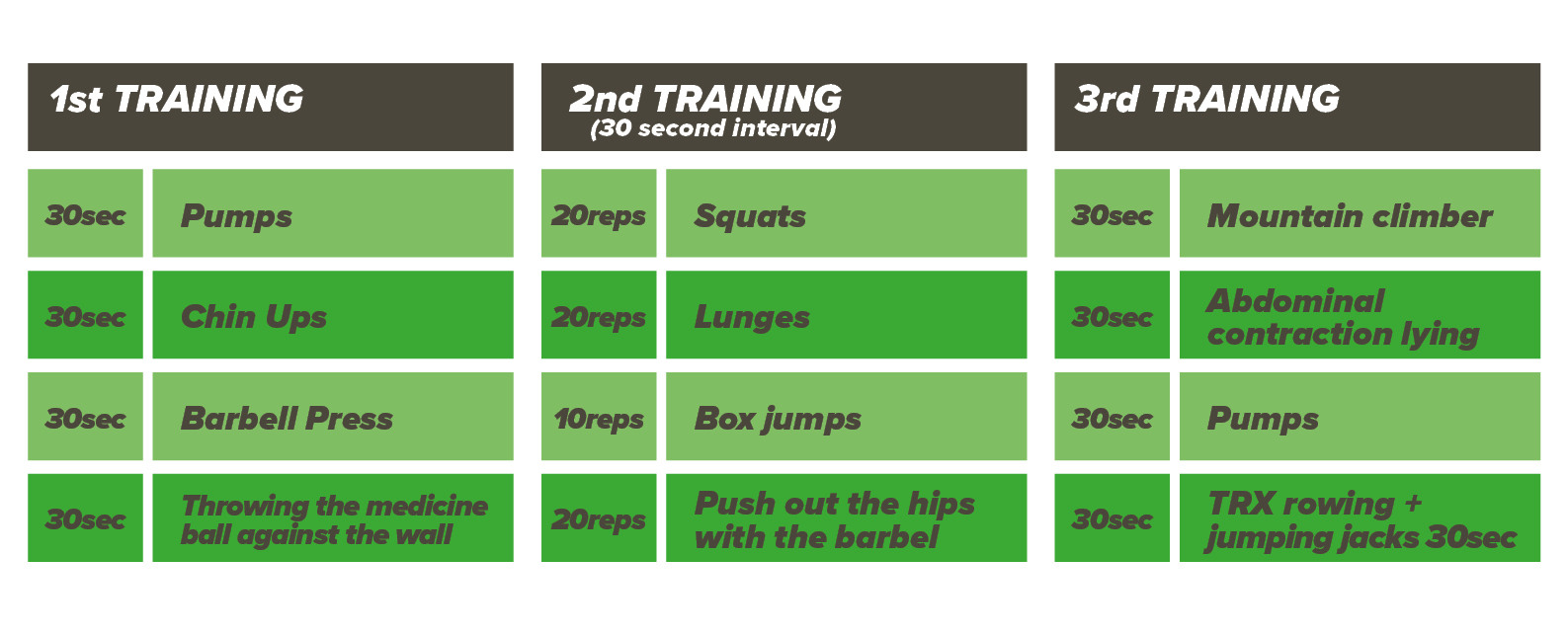At the beginning there was chaos
People trained in an ill-conceived manner, using accidental equipment. Maybe they did not even know that what they do is determined by training. Later it began to take shape, someone thought to close the sequences of exercises in the repetition interval or in time, and so the germ of peripheral training was born. All known CrossFit today is also a form of peripheral training with added elements of Olympic weightlifting such as snatch or clean & jerk. However, this is quite a young discipline, created only in 2001. If you look closely, you can see that many elements borrow from the circuit training system that was created in 1953 at the University of Leeds, England. Gentlemen R. Morgan and G.T. Anderson created a program based on building muscle endurance and strength using high intensity techniques.

What is circuit training?
Circuit training consists in selecting exercises and arranging them in the right order. In the original format proposed by its creators, we talk about 9-12 stations (exercises). This number, however, can evolve according to our needs taking into account such variables as: time of training, purpose, level of participants' advancement, number of participants, place of training or type of equipment available. The working time of the full circuit execution can be uninterrupted (exercises are carried out one after the other) or intermittent (between 15 and 30 seconds interval between stations). Execution of each exercise in the circuit can be programmed in time (15 - 45 seconds) or in repeats (8 - 20 repetitions). The training can be performed on machines, with free weights, resistance belts, with the weight of your own body or in any combination, mixing all possibilities. Between the stations we can also do cardio exercises such as a bicycle, rowing ergometer, jumping jacks, skipping rope and other for the purpose of increasing endurance and efficiency. Thus, you see that undeniably, the greatest advantages of circuit training include its versatility and flexibility.

Let's move to training planning. 9 stations performed in a row is impossible to reach for beginners and even for intermediate users. I noticed from my own practice that even 4 stations can cause a problem for my charges. Therefore, let's focus at the beginning on this number. We will plan 3 trainings for 4 stations each. The first one will focus on the upper part of the body, it will be performed on time and without breaks. The second will apply to the lower part of the body, the exercises will be performed in a certain number of repetitions with a 30 second interval between. The third training will involve the whole body, will be programmed on time, without breaks, and finally we will add a cardio element. After each full circuit, there is a 2 to 5 minute interval to catch the breath and stabilize the heart rate. We can repeat the circuit any number of times.

As it was mentioned before, circuit training in its form does not limit us in any way. Therefore, for training, come with several sets of exercises prepared so as not to torture the same 4 exercises for an hour. Having two to four sets means repeating each of them two or three times within an hour. It will give us a lot of positive impressions (and hectoliters of sweat) in one workout. If you have so far complained that your training is boring and monotonous, now is the time to use your imagination! Try to organize exercises and sets so that they do not repeat and involve as much muscle in your body as possible. Take exercises as mobile as possible, avoid isolation exercises.
Summary
Studies conducted on circuit training agree that it leads to an increase in the level of VO2max (maximum oxygen uptake at maximum effort), stimulates muscle tissue to hypertrophy, and through a large energy expenditure during one training session leads to a measurable decline in body fat in exercising. Give yourself about 1 month for training 3 times a week to see the first effects.





